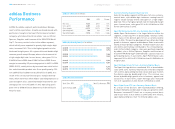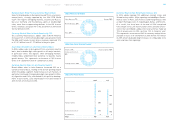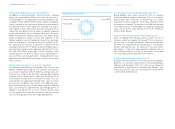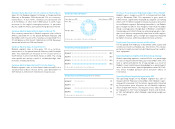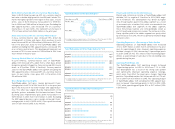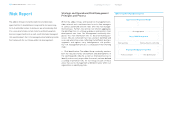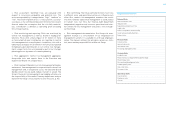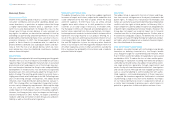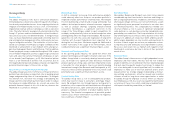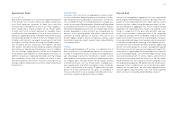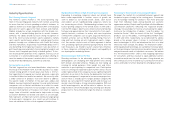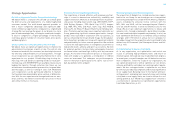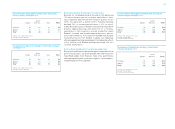Reebok 2006 Annual Report Download - page 101
Download and view the complete annual report
Please find page 101 of the 2006 Reebok annual report below. You can navigate through the pages in the report by either clicking on the pages listed below, or by using the keyword search tool below to find specific information within the annual report.
097
» Risk assessment: Identified risks are evaluated with
respect to occurrence probability and potential loss. The
occurrence probability is categorized as “high”, “medium” or
“low”. The extent of potential loss is measured on a case-by-
case basis as the contribution deviation from the most recent
forecast under the assumption that the risk fully material-
izes. Contribution is defined as operating profit excluding
intra-Group royalties.
» Risk monitoring and reporting: Risks are monitored by
central risk management as well as brand or headquarter
functions. Risks with a likely impact of € 1 million or more
on forecasted full-year contribution are reported to central
risk management on a monthly basis. In addition, risks with a
likely financial impact of € 5 million or more must be reported
immediately upon identification to our central risk manage-
ment. Longer-term risks are reviewed as part of our strategic
planning process by means of scenario planning.
» Risk aggregation: Central risk management aggregates
Group-wide risks and reports them to the Executive and
Supervisory Boards on a regular basis.
» Risk treatment: Based on our risk management principles
and manual, line management in cooperation with central risk
management and, in exceptional cases, the Executive Board
decides which risks we avoid, reduce, transfer or accept. The
Group’s financial risk management and hedging activities are
the responsibility of the central Treasury department and are
based on the Group’s treasury policies (see Treasury, p. 85).
» Risk controlling: The Group centrally monitors how risks
in different areas and operational processes influence each
other. Also, central risk management examines the results
of actions taken by operational management to avoid, reduce
or transfer risks over time. Our Internal Audit department
independently appraises and assesses operational and inter-
nal controls for the management of business risks through-
out the Group.
» Risk management documentation: Our Group risk man-
agement manual is a core element of our integrated risk
management system. It is available to all Group employees
online. The manual outlines the principles, processes, tools,
risk areas and key responsibilities within our Group.
External Risks
Macroeconomic risks
Industry risks
Regulatory and political risks
Legal risks
Risks from product counterfeiting
Social and environmental risks
Natural risks
Financial Risks
Currency risks
Interest rate risks
Investment risks
Financing and liquidity risks
Strategic Risks
Portfolio risks
Risks from loss of key promotion partnerships
Brand image risks
Research and development risks
Product quality risks
Own-retail risks
Personnel risks
Operational Risks
Sourcing risks
Customer risks
IT risks
Corporate Risks Overview



